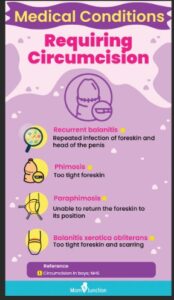WHAT IS THE DEAL WITH MALE CIRCUMCISION, CHILD SEXUAL ABUSE AND HUMAN RIGHTS?
The role of health and hygiene

 These posts are about circumcision and the common reasons given for circumcision around the world. These include cultural rites of passage for young adolescent boys, the need for hygiene, the ability to have sex, and religion. Ultimately, we want to focus on the context of consent, and if boys really do have that right.
These posts are about circumcision and the common reasons given for circumcision around the world. These include cultural rites of passage for young adolescent boys, the need for hygiene, the ability to have sex, and religion. Ultimately, we want to focus on the context of consent, and if boys really do have that right.
In the previous blog I focused on religion. While Islam and Judaism do practice circumcision, most Christians do not get circumcised for religious beliefs, although strong religious history could be a reason for why it continues despite moving to other stated reasons, such as health and hygiene.
From the surveys received thus far, the biggest reason given for circumcision is health and hygiene. Let’s look at the most common health issues and how prevalent they really are. To complete the survey, click this link https://bit.ly/4jIdjBc or scan QR code
Size and shape of your penis. What I often hear is the belief that not being circumcised, or circumcised at the wrong age, would or could affect the size or shape of the penis. To learn more: https://www.medicalnewstoday.com/articles/types-of-penises#base-head-ratio
Recurrent balanitis – Balanitis is soreness and redness in the head of your penis. It can make you uncomfortable in one of the most sensitive areas: the head of your penis, as well as the loose flap of skin that covers the tip if you haven’t been circumcised. It can be treated, and it’s often easy to prevent.
You can get balanitis at any age, but it’s most common in children under the age of 4, whether circumcised or not. Anyone can get it, but you have a higher risk of balanitis if you haven’t been circumcised and don’t clean your foreskin thoroughly. Diabetes also raises your risk of balanitis. https://www.webmd.com/men/penis-disorder-balanitis
PLEASE NOTE that balanitis is most common among very young children. In adults, preventing balanitis appears as simple as keeping your penis and foreskin clean.
Uncircumcised men with poor personal hygiene are most affected by balanitis. The incidence is believed to affect 0.5% of boys by their 15th birthday.
https://www.cuh.nhs.uk/patient-information/balanitis-xerotica-obliterans-bxo-in-boys-information-for-parents-and-carers/#section-3
Phimosis is a condition where the foreskin cannot be retracted (pulled back) from the head of the penis. It can occur in both children and adults, particularly in those who are uncircumcised. Symptoms may include difficulty urinating or ballooning of the foreskin during urination. Treatment options vary and may include topical steroid creams, stretching exercises, or in some cases, surgical intervention.
Nearly all baby boys have physiological phimosis. As newborns age, their foreskin changes gradually so it can pull back. Medical professionals estimate only about 1% of males still have physiologic phimosis when they’re 16 or older.
https://my.clevelandclinic.org/health/diseases/22065-phimosis
Paraphimosis is a painful condition where the foreskin becomes trapped behind the head (glans) of the penis, making it impossible to return to its normal position. This condition can lead to vascular engorgement and swelling of the glans, potentially cutting off blood circulation. It typically develops when the foreskin is retracted and left in that position for an extended period, resulting in congestion and difficulty in repositioning the foreskin. Paraphimosis is considered a medical emergency that requires prompt evaluation and treatment to prevent complications.
Paraphimosis is rare. About 0.2% of uncircumcised children between 4 months and 12 years old will have paraphimosis.
Balanitis Xerotica Obliterans (BXO) is a rare, chronic inflammatory condition that affects the head of the penis and the foreskin. It can cause scarring and narrowing of the urethra, leading to difficulties with urination and sexual activity.
https://www.dovemed.com/health-topics/focused-health-topics/balanitis-xerotica-obliterans-causes-symptoms-diagnosis-and-treatment
HIV transmission Circumcision has been shown to reduce the risk of HIV transmission. Specifically, male circumcision can lower the risk of HIV-1 infection in heterosexual men by approximately 60%. This protective effect is particularly significant in high-risk populations, where circumcision reduces the transmission of HIV from HIV-positive women to men. The World Health Organization (WHO) recommends voluntary medical male circumcision as an effective strategy to reduce the risk of HIV infection during heterosexual exposure. However, the effectiveness may vary, as circumcision may not significantly reduce HIV transmission risk for men who have sex with men.
https://aidsrestherapy.biomedcentral.com/articles/10.1186/s12981-017-0167-6
Penile cancer Some studies suggest that circumcision might prevent penile cancer. However, this is unverified, and more research is needed. Penile cancer is rare in the United States. It typically only affects 1 in every 100,000 people with a penis. Most types of penile cancers begin in the skin cells of the penis. https://www.roswellpark.org/cancertalk/201708/does-circumcision-prevent-cancer
What is the message? Many of the problems occur during young childhood, which means circumcision at birth is the best way to avoid these. Otherwise, the best way to keep your penis healthy is with soap and water. The best way to avoid HIV is to limit the number of your partners. https://www.wikihow.com/Clean-Your-Penis
What are the thoughts of doctors in the Philippines? Reynaldo O. Joson, MD, MHA, MHPEd, MScSurg, Education for Health Development in the Philippines says NO to Routine Circumcision in the Philippines https://xtulepinoy.wordpress.com/
Have these links helped in your search for information about circumcision?
Remember consent …
- Consent is informed. Someone cannot actively and freely agree if they don’t have the full information.
- Consent is freely given. There is no pressure or manipulation, including bullying or other criticism for the choice.
- Consent is reversible. Somone should be able to change their minds at any time. Even if they said yes early on, they could say no after that, even if they are on the table for the procedure, they can still say no.
- Consent is wanting to do it. It is doing only those things that someone feels comfortable doing. They should not be expected to do things they don’t want to do.
- Consent is specific. If someone says yes to circumcision, this does not mean they are saying yes to how the circumcision is being done.
To help in your own understanding of the reasons for circumcision that are about health and hygiene, talk with your parents, especially your father, and with your doctor, highlighting some of the information from this posting. In our next post we will talk about the reasons given related to sex and sexuality.



 Each child’s survival story will be different depending on their age, gender, family, experience, and many other factors in their environment.
Each child’s survival story will be different depending on their age, gender, family, experience, and many other factors in their environment. This is an online game which can be played by a family with easily obtainable materials to help families recognize and talk about how they are adjusting to the new normal.
This is an online game which can be played by a family with easily obtainable materials to help families recognize and talk about how they are adjusting to the new normal. Patakarang pangkaligtasan para sa proteksiyon laban sa pang aabusong sekswal, ito ang tinatawag na Mga PATAKARAN SA PAGHAWAK
Patakarang pangkaligtasan para sa proteksiyon laban sa pang aabusong sekswal, ito ang tinatawag na Mga PATAKARAN SA PAGHAWAK This video introduces you to one form of prevention of sexual violence on children: Teaching personal safety to children/students, their teachers and their parents.
This video introduces you to one form of prevention of sexual violence on children: Teaching personal safety to children/students, their teachers and their parents. Mga magulang/ taga pag alaga, ang pag unawa sa ating mga damdamin at kung paano ang reaksiyon ng ating katawan dito ay mahalaga para sa ating kaligtasan.
Mga magulang/ taga pag alaga, ang pag unawa sa ating mga damdamin at kung paano ang reaksiyon ng ating katawan dito ay mahalaga para sa ating kaligtasan. Storytelling is an easy way to teach. CPTCSA has products to help families read to children to help them understand the concepts for personal safety and getting help. Click here to see and hear the story of Erika and Jay as they learn the touching rule. This book is also available on our website to purchase hard copies.
Storytelling is an easy way to teach. CPTCSA has products to help families read to children to help them understand the concepts for personal safety and getting help. Click here to see and hear the story of Erika and Jay as they learn the touching rule. This book is also available on our website to purchase hard copies. 